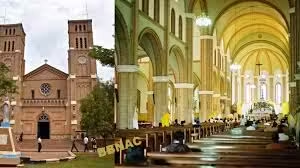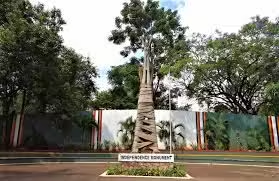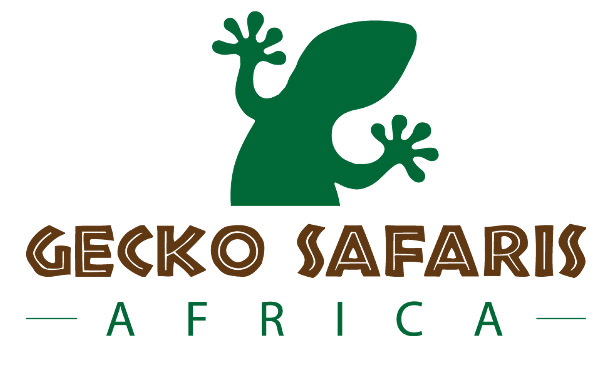Exploring Kampala city in Uganda
Kampala, Uganda’s bustling capital city is a vibrant mix of traditional African culture, colonial history, and modern development. Located along the shores of Lake Victoria, Kampala is a city of rolling hills with lush greenery, lively markets, cultural landmarks, and a thriving culinary scene.
 Whether you’re an adventure seeker, history enthusiast, or just curious about Uganda’s unique culture, a Kampala city tour offers an unforgettable experience, letting you dive into the best spots to visit, things to do, and tips to make the most of your Kampala city tour!
Whether you’re an adventure seeker, history enthusiast, or just curious about Uganda’s unique culture, a Kampala city tour offers an unforgettable experience, letting you dive into the best spots to visit, things to do, and tips to make the most of your Kampala city tour!
Kampala’s History
Kampala is rooted in the heritage of the Buganda Kingdom, which ruled the area long before British colonization. Originally, the site of Kampala was known as the “Hills of Impalas,” giving the city its name. In 1890, British explorer Frederick Lugard established a colonial fort on the hill, and from there, Kampala evolved into a central hub of trade and culture.
Top Highlights of a Kampala City Tour
FOSSIL CENTERS
Kasubi Tombs
 A UNESCO World Heritage site, the Kasubi Tombs are a significant part of Uganda’s cultural heritage, serving as the burial ground for the kings (Kabaka) of the Buganda Kingdom. Built in 1882, the tombs offer insights into Buganda traditions, spirituality, and architecture.
A UNESCO World Heritage site, the Kasubi Tombs are a significant part of Uganda’s cultural heritage, serving as the burial ground for the kings (Kabaka) of the Buganda Kingdom. Built in 1882, the tombs offer insights into Buganda traditions, spirituality, and architecture.
Visitors can explore the thatched huts, intricate decorations, and symbolic items that surround the graves of the former kings. A local guide typically offers fascinating details about the customs, rituals, and stories associated with this sacred site.
Uganda Museum
 For anyone wanting to understand Uganda’s complex history and culture, the Uganda Museum is a must-visit. Established in 1908, it is one of the oldest museums in East Africa and houses a vast collection of ethnographic, archaeological, and musical artifacts.
For anyone wanting to understand Uganda’s complex history and culture, the Uganda Museum is a must-visit. Established in 1908, it is one of the oldest museums in East Africa and houses a vast collection of ethnographic, archaeological, and musical artifacts.
The museum showcases traditional musical instruments, tribal artifacts, and displays on the region’s natural history, making it a great stop for a crash course on Uganda’s diverse cultural heritage.
RELIGIOUS CENTERS.
Namirembe and Rubaga Cathedrals

Kampala is home to two prominent cathedrals, Namirembe (Protestant) and Rubaga (Catholic), each with its own architectural beauty and historical significance. Both cathedrals offer panoramic views of the city and provide a glimpse into Uganda’s religious heritage.
Rubaga Cathedral, located on Rubaga Hill, was completed in 1925 and is the headquarters of the Catholic Church in Uganda. Namirembe Cathedral, meanwhile, is known for its classic red-brick architecture and beautiful interior design.
Uganda Martyrs Shrine, Namugongo
 A spiritual landmark, the Uganda Martyrs Shrine in Namugongo commemorates the 22 Catholic and Anglican martyrs who were executed in the late 19th century for their faith by King Mwanga II of Buganda. This site is one of Uganda’s most revered and significant religious destinations.
A spiritual landmark, the Uganda Martyrs Shrine in Namugongo commemorates the 22 Catholic and Anglican martyrs who were executed in the late 19th century for their faith by King Mwanga II of Buganda. This site is one of Uganda’s most revered and significant religious destinations.
Every year on June 3, millions of pilgrims gather here to honor the martyrs’ legacy, making it one of the most important religious sites in East Africa. The shrine includes beautiful architecture, a serene lake, and a museum detailing the history of the martyrs.
Bahá’í Temple
The Bahá’í Temple in Kampala is the only Bahá’í House of Worship on the African continent, making it a rare and unique attraction. Sitting atop Kikaya Hill, the temple features lush gardens and a peaceful ambiance ideal for meditation.
The architecture of the temple is beautiful, featuring nine entrances that represent openness to all faiths. Visitors can take a peaceful walk through the gardens and learn about the Bahá’í faith, which promotes unity and peace among all people.
Old Kampala Mosque (Uganda National Mosque)
Commonly referred to as the Gaddafi Mosque, this iconic landmark on Old Kampala Hill is the largest mosque in Uganda. Completed in 2007, it was funded by the late Libyan leader Muammar Gaddafi and has since become a prominent place of worship.
The mosque’s minaret offers one of the best panoramic views of Kampala’s sprawling cityscape, and a guided tour gives visitors a closer look at its stunning Islamic architecture and cultural significance.
Craft Markets
Kampala’s craft markets are perfect for souvenir shopping, with the most popular being the Buganda Road Craft Market and the Uganda Arts and Crafts Village. Here, you’ll find unique handmade items such as baskets, jewelry, textiles, and carvings, many made by local artisans.
It’s a great opportunity to support local craftspeople while taking home a piece of Ugandan culture. Don’t be shy to haggle—bargaining is part of the shopping experience here!
Government Institutions in Kampala
The Parliament of Uganda
Located in the heart of Kampala, the Parliament of Uganda is the symbol of democracy and governance in the country. The building is an architectural marvel, with beautifully landscaped grounds and sculptures that highlight the spirit of the Ugandan people.
Guided tours are available for visitors who want to learn about Uganda’s legislative processes, governance structure, and political history. If you’re lucky, you might catch a parliamentary session in action.
Independence Monument
 Standing tall in the center of Kampala, the Independence Monument is a symbol of Uganda’s independence from British rule, achieved on October 9, 1962. The monument, depicting a man lifting a child toward freedom, embodies Uganda’s journey toward self-determination.
Standing tall in the center of Kampala, the Independence Monument is a symbol of Uganda’s independence from British rule, achieved on October 9, 1962. The monument, depicting a man lifting a child toward freedom, embodies Uganda’s journey toward self-determination.
It is a popular photo spot and an important piece of history, reminding visitors of Uganda’s resilience and national pride.
Makerere University
Founded in 1922, Makerere University is Uganda’s oldest and most prestigious higher-learning institution. This sprawling campus sits atop Makerere Hill and is known for its beautiful architecture, academic rigor, and contributions to African intellectualism.
Walking around the campus, visitors can explore iconic buildings like the Ivory Tower, which symbolizes higher education in Uganda, and the Makerere University Art Gallery, which showcases art by local and international artists.
Uganda Management Institute (UMI)
UMI is another prominent educational institution that offers programs in management and public administration. It has played a crucial role in training Uganda’s civil servants and leaders and is known for its contribution to human capital development in Uganda and beyond.
Experiencing Kampala’s Vibrant Markets
Owino Market (St. Balikuddembe Market)
Known for its bustling atmosphere and endless variety, Owino Market is the largest open-air market in Kampala. It’s an exciting place to explore, offering everything from clothing and electronics to fresh produce and street food.
For a true taste of Ugandan street food, try “Rolex” (a rolled chapati with eggs and vegetables) or sample some roasted maize or gonja (plantains).
Nakasero Market
 Nakasero Market is a local favorite for fresh fruits, vegetables, spices, and herbs. Located in the heart of Kampala, this market gives a colorful look into the daily lives of locals. You’ll find an array of tropical fruits, including jackfruit, papayas, and mangoes.
Nakasero Market is a local favorite for fresh fruits, vegetables, spices, and herbs. Located in the heart of Kampala, this market gives a colorful look into the daily lives of locals. You’ll find an array of tropical fruits, including jackfruit, papayas, and mangoes.
Friendly vendors often invite visitors to try samples, making it an enjoyable experience for food lovers and curious travelers alike.
Cultural Immersion and Arts Scene
Ndere Cultural Centre
 Ndere Cultural Centre is a fantastic place to immerse yourself in Uganda’s traditional music and dance. With weekly performances showcasing traditional dances from various regions of Uganda, this center is an engaging way to understand the country’s diverse tribal traditions.
Ndere Cultural Centre is a fantastic place to immerse yourself in Uganda’s traditional music and dance. With weekly performances showcasing traditional dances from various regions of Uganda, this center is an engaging way to understand the country’s diverse tribal traditions.
Visitors are encouraged to join in the dance, which creates a fun, interactive experience while supporting a local organization dedicated to cultural preservation.
Kampala Contemporary Art Scene
Kampala’s art scene has grown significantly in recent years, with several galleries displaying Ugandan contemporary art.
Afriart Gallery is one of the city’s leading spaces for modern Ugandan art, featuring pieces that explore social and cultural themes.
Artists from all over East Africa exhibit their work here, offering insights into modern African identity, culture, and innovation.
Kabaka’s Palace and the Idi Amin Torture Chambers
Located on Mengo Hill, the Kabaka’s Palace is the residence of the King of Buganda, Uganda’s largest traditional kingdom.
While the palace itself is a site of royal significance, the nearby torture chambers are a chilling reminder of Uganda’s political history under the dictatorship of Idi Amin.
A guided tour offers insights into the resilience of the Ugandan people and the legacy of the Buganda Kingdom in the face of adversity.
The Buganda Royal Mile
 The Royal Mile is a historic pathway that links the Kabaka’s Palace to the Lubiri, or royal burial grounds, on Kasubi Hill. This mile-long road features various landmarks significant to Buganda culture and history.
The Royal Mile is a historic pathway that links the Kabaka’s Palace to the Lubiri, or royal burial grounds, on Kasubi Hill. This mile-long road features various landmarks significant to Buganda culture and history.
Taking a walk along the Royal Mile with a knowledgeable guide reveals insights into Buganda’s monarchy, traditional architecture, and the significance of the Buganda Kingdom in Uganda’s history.
Culinary Delights and night life in Kampala
Ugandan cuisine is a delicious blend of native ingredients and cultural influences from India, Britain, and the Middle East. Kampala’s restaurants offer everything from traditional Ugandan dishes to international fare. Here are a few dishes to try:
Luwombo, A traditional Buganda dish made with meat or ground nuts wrapped in banana leaves and steamed.
Matoke, A staple made from steamed plantains, often served with peanut sauce or meat.
Rolex: A street food favorite, this is a rolled chapati filled with a vegetable omelet, perfect for a quick and satisfying meal.
Tilapia and Nile Perch: Fresh fish from Lake Victoria, usually grilled or fried, is a delicacy in Kampala’s restaurants.
Nightlife in Kampala
Kampala is known for its vibrant nightlife, with numerous bars, clubs, and lounges scattered across the city. Kisementi in Kololo is a nightlife hotspot with popular venues like The Alchemist and Casablanca.
Ugandan music, including Afrobeat and reggae, is a staple of Kampala’s nightlife, creating an upbeat atmosphere where visitors can enjoy local sounds and hospitality.
Essential Tips for Your Kampala City Tour
Hire a Guide: A knowledgeable local guide can enhance your experience by sharing insights into the history and culture of each site. Most tour companies offer city tours, including full- or half-day itineraries.
Plan for Traffic: Kampala is known for its heavy traffic, especially during rush hours. Allow extra time between sites and consider using “boda-bodas” (motorcycle taxis) for quick travel around the city.
Safety: Like any big city, it’s important to stay alert, especially in crowded markets. Stick to well-lit areas at night and avoid carrying large amounts of cash or valuables.
Try Local Food: Street food is a big part of the Kampala experience, but be cautious with water-based foods or uncooked items to avoid any stomach issues.

